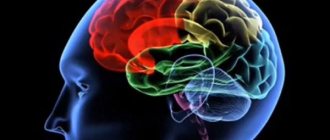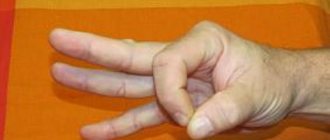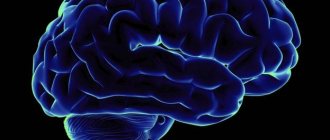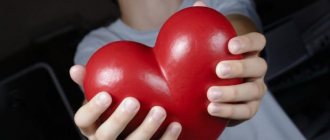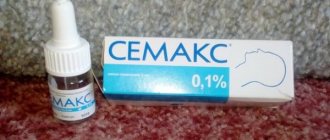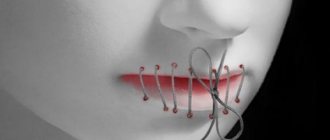Every year, brain stroke leads to disability for thousands of people. Moreover, the consequences depend on how extensive the hemorrhage is, as well as on how quickly and correctly the doctors worked. If brain cells have been without oxygen for a long time, they die and it is almost impossible to restore them. Extensive ischemic stroke is the most common.
It accounts for about 30% of all brain pathologies. In many cases, the disease leads not only to a deterioration in the quality of life, but also to death.
General description and types of pathology
A major stroke is a serious injury to the brain that affects a large part of the brain. Its blood supply is disrupted.
Due to oxygen starvation, toxic substances accumulate in the brain tissue, and degenerative processes begin. In most cases, such a violation leads to disability of the patient. The consequences of a massive brain stroke are extremely difficult to eliminate.
The differences between ischemic and hemorrhagic forms of the disease are analyzed by rehabilitation physician Sergei Nikolaevich Agapkin:
Table 1. Types of pathology
| Stroke form | Peculiarities |
| Major ischemic stroke | It is considered less dangerous. Poor circulation occurs due to short-term blockage of cerebral vessels by cholesterol plaques or a blood clot. Proper treatment helps to maximize recovery after injury. This type of extensive brain stroke leaves more room for survival. It also has an additional classification:
|
| Extensive hemorrhagic stroke | The prognosis is less encouraging. The chances of survival are very low. Death occurs in 89% of cases. Blood circulation is disrupted due to the fact that the vessel ruptures and biological fluid flows into the brain tissue. Next, swelling of the organ begins, due to which all vital human functions cannot be performed as before. Basically, the patient goes into a vegetative form of existence. Hemorrhagic stroke of the brain can be intracerebral and subarachnoid. |
| Stem | It affects only the base of the organ. However, this is where the vital centers are located. Such a defeat leads to the immediate death of a person. |
In addition, the disease can be classified according to its location:
- Stroke of the left hemisphere of the brain. It leads to paralysis of the right side of the human body. Speech is also impaired, problems with hearing and vision appear, and persistent mental pathologies are observed. The patient is not able to create logical chains of thinking or analyze the information he receives. He loses the ability to remember dates, names, and the ability to build a time sequence of events is impaired. Math skills suffer.
Differences in the effects of stroke on the right and left side
- Stroke of the right hemisphere of the brain. Due to extensive hemorrhage, sensitivity is lost on the left side. Memory and vision also suffer. Speech may be preserved, but the ability to nonverbally process information is impaired. Imagination, spatial orientation, figurative memory, and emotions suffer (the victim’s condition can hardly be called adequate).
First aid should be provided to the patient within 3 hours after the hemorrhage. Otherwise, his chances of survival drop to a few percent.
Treatment tactics for acute stroke
Acute stroke requires immediate and adequate treatment in a hospital setting. Neurologists at the Yusupov Hospital provide emergency care to patients around the clock and prevent further development of pathology. In case of acute cerebral stroke, complex treatment is carried out. Medical measures in the treatment of acute stroke:
- administration of hemostatic agents, vitamins and vascular drugs;
- detoxification therapy;
- taking diuretics and drugs to lower blood pressure;
- timely physical therapy and physiotherapy.
A person can return to a full life only after diagnosis and therapy carried out by neurologists, rehabilitation specialists, and cardiologists. Compliance with the rules of treatment and rehabilitation allows one to achieve significant success in the fight against pathology.
Causes of the disease
Regardless of whether the patient has an extensive ischemic stroke or a hemorrhagic one, it does not appear on its own. It is provoked by certain factors:
- Atherosclerosis of blood vessels (reduction of their lumen with subsequent blockage). The disease can also be triggered by a violation of the vascular wall, its increased fragility, aneurysm, stenosis, or pathological bending of the artery.
- Diabetes.
- Hypertension.
- Obesity that develops due to lack of physical activity.
- Ischemic attack.
The head of the neurology department of hospital No. 9 in Kazan, Zarina Kamilievna Latypova, tells more about the causes of the disease (the video works, dear reader):
- Heart diseases: arrhythmia, defect, presence of an artificial valve.
- Excessively high cholesterol levels.
- Infectious or toxic damage to the brain (arachnoiditis, encephalitis, meningitis).
- Amyloidosis of cerebral vessels.
- Excessive alcohol consumption, drug addiction.
- Long-term use of medications.
Read about headaches from long-term use of medications - overuse headache.
- Disorders of the endocrine system, in which degenerative changes begin in the vessels.
- Blood diseases.
In young people, extensive hemorrhagic stroke occurs more often. Moreover, it occurs more often in men aged 40-60 years than in women. In people over 80 years of age, the likelihood of having a stroke increases significantly.
Acute stroke: causes of sudden illness
For many people, the relevant question is about what causes an acute stroke. Provoking factors and causes of acute stroke are associated with chronic pathologies of cerebral vessels, somatic pathologies, jumps in individual blood pressure, as well as the presence of this disease in the family. A dangerous disease can manifest itself as a result of physical and psycho-emotional fatigue, and disturbances in night rest. Consumption of alcohol and tobacco products, as well as certain products, can lead to serious complications and then you will have to contact a neurologist.
Symptoms of the disease
It is important to consider the clinical picture of a major stroke. The speed of his reaction and the success of treatment often depend on how much a person knows the symptoms of pathology. Pathology is characterized by the following manifestations:
- A distorted smile, as well as a violation of facial symmetry.
- The patient cannot say a word, speech becomes slurred.
- There is great weakness in the limbs. If you ask the victim to raise both arms at the same time, he will not be able to do this.
The first signs of a stroke. If you have at least one symptom, you must call an ambulance
- Impaired coordination of movements (especially if the cerebellum is affected).
- Severe and sharp headache.
- Impairment of consciousness varying in severity.
- Inability to perceive other people's speech.
A visual video from emergency doctors will help you recognize the first signs of pathology:
- Loss of consciousness and even coma.
- Drowsiness.
- Vomit.
- Problems with memory, as well as other mental processes.
Intracerebral hemorrhage is characterized by rapid breathing (quite noisy), fecal and urinary incontinence, and severe muscle hypotonia in one half of the body. Damage to the subarachnoid space is characterized by increased temperature, the appearance of epileptic seizures, increased sweating, and psychomotor agitation.
If the patient develops a coma, this indicates that the hemorrhage is extensive, affecting most structures of the brain. The consequences here will be irreversible. The longer a person remains in this state, the less likely he is to survive.
The presence of coma is determined by the doctor. The patient has no reaction of the pupil to a ray of light, the sensitivity of soft tissues is lost, and he falls into deep sleep. At the same time, the patient’s brain cannot independently control all vital functions (especially breathing).
If such symptoms occur, it is necessary to urgently call an ambulance indicating the presumptive diagnosis. Specialists must provide assistance to a victim of a massive brain stroke as quickly as possible. After three hours, all the doctors’ actions will be useless.
What is a major stroke?
A major stroke is a serious disruption of blood circulation in the brain. During a stroke, some parts of the brain become dead and nerve cells die due to lack of oxygen. Taking into account the fact that each area of the human brain is responsible for one or another function of the body, a major stroke one way or another leads to harmful consequences, the degree of which depends on many factors.
If minor areas of the brain are affected by a stroke and the necessary treatment is provided in a timely manner, the consequences of the lesion can be completely or partially eliminated. When a stroke affects the centers responsible for breathing and heartbeat, the person in most cases dies quite quickly.
Extensive brain damage is usually expressed in the rapid development of stroke and its severity. The prognosis for the patient directly depends on the number of dead cells in the brain and their location.
A major stroke can be called the most severe condition from a neurological point of view - after it the chances of survival and full recovery are low. Neurology and neurosurgery deal with the treatment of such cerebral circulatory disorders. Correct rehabilitation, the plan of which is drawn up for each patient individually, helps to recover from a major stroke.
First aid to the victim
In case of a major stroke, you should urgently call an ambulance. But there is no time to waste before she arrives.
First aid to a patient includes the following actions:
- First, the person should be placed in a horizontal position, with the head and upper torso positioned slightly above the general level of the body (it should be raised by 20-30 cm). This will slow down the development of cerebral edema.
- Provide maximum fresh air flow. To do this, you need to remove all restrictive clothing, belts, and ties from the patient. The windows in the room where it is located must be open (you must ensure that there is no draft).
- The respiratory tract should be cleared of mucus and vomit. It is important to ensure that the person’s tongue does not sink in, as it can block the airway. Be sure to turn your head to the side and remove the removable dentures.
- If the patient cannot breathe on his own, resuscitation must be carried out until the ambulance arrives.
About the correct algorithm for performing cardiopulmonary resuscitation:
- You should not give a person food, medications or water - this will only cause harm.
- If the victim's limbs are paralyzed, then they need to be rubbed.
Diagnosis of a major stroke involves an MRI or CT scan of the brain. These studies will determine the severity of the disease, the size of the affected areas, and their location.
Is it worth getting together with your ex-husband after a divorce? Psychology
Children grow up and, depending on their age, scatter in all directions: some go to study in another city, others begin to live separately or actively communicate with friends, and still others start their own families. Parents are left alone with each other. If up to this point the partners did not get along, did not maintain a marital relationship, and performed only parental functions, they will have nothing to talk about. And here it’s just a stone’s throw from betrayal. But if, having stumbled, both partners understand that they are both to blame for adultery, many couples get back together.
Is it possible to restore a relationship after a divorce? Alas, not everyone manages to correct previous mistakes, and in some cases the second attempt is obviously doomed to failure. However, you can estimate the chances of success in advance. To begin with, both spouses must honestly answer the question: why does each want to return.
Features of treatment
Treatment of extensive ischemic or hemorrhagic stroke is carried out in a hospital and differs slightly from each other. Therapy is aimed at restoring the vital functions of the body, eliminating cerebral edema, normalizing pressure (arterial and intracranial), and preventing recurrent hemorrhage. Naturally, a patient who has suffered a stroke will require psychological and physical rehabilitation.
Treatment for a major cerebral stroke is lengthy. The victim will have to take care of himself and follow the instructions of doctors for the rest of his life. Hemorrhagic stroke often requires neurosurgical intervention. It should be performed as quickly as possible, immediately after the onset of symptoms and clarification of the diagnosis.
As for drug therapy for extensive stroke, the following drugs are most often used:
- Restoring blood flow, destroying blood clots, and also normalizing blood pressure: Alteplase, Cardiomagnyl.
- Vasoactive agents: Vinpocetine, Trental.
- Antiplatelet agents: Tiklida.
- Anticoagulants: Heparin.
- Angioprotectors: "Prodectin".
- Antioxidants: Mildronate.
- Saline solution for intravenous infusion.
- Antibiotics (to prevent severe brain infections).
- Neurotrophins: Cortexin, Cerebrolysin. They help restore the functionality of cells of the nervous system. These drugs help restore motor function in humans.
- In the presence of a hemorrhagic major stroke, blood clotting must be increased to stop the bleeding. For this purpose, the following are prescribed: “Strophanthin”, “Reopoliglyukin”.
Drug therapy is carried out under the strict supervision of a doctor with constant monitoring of the functionality of the cardiac system and pressure.
Causes
Extensive cerebral hemorrhage has a multifactorial etiology. Often a violation is caused by several reasons interacting with each other. In some cases, a stroke occurs as a result of injuries accompanied by damage to the brain.
The integrity of the feeding vessels is compromised and the likelihood of restoring blood flow is minimal. Hemorrhages are also caused by other clinical and biochemical factors that influence the risk of pathology.
Risk factors:
- Tendency to hypertension.
- Alcohol abuse.
- Diabetes.
- Increased cholesterol levels in the blood.
- Smoking.
- Overweight.
- Pathologies accompanied by blood clotting disorders.
- Breathing disorders during sleep.
- Chronic intoxication.
- Myocardial infarction.
- Physical inactivity.
Interesting: Nutrition and recovery after a stroke at home
Major strokes are more common in patients aged 30 to 60 years. In childhood, cerebral hemorrhages are rarely diagnosed.
Survival prognosis
It is quite difficult to make a prognosis for any type of stroke, since everything depends on the degree of damage to brain tissue. However, extensive organ damage does not provide a chance of survival. In addition, the patient may soon experience another stroke. The chances of survival depend on several factors:
- Age. It is easier for a young body to cope with the consequences of pathology, since regeneration processes occur faster. In older age, the patient's incapacity is guaranteed.
- State of health at the time of hemorrhage. This is especially true for the cardiovascular system.
Report by neurologist Mikhail Moiseevich Shperling on the care of patients who have suffered a stroke:
- Bad habits. It is more difficult for an organism affected by nicotine and alcohol to fight the consequences of the disease. In such patients, the mortality rate is very high.
- Speed of emergency care.
- Patient care. Those people who are surrounded by the care and love of loved ones, receive positive emotions and support from them, and recover faster.
If the patient is bedridden, then it will be more difficult to cope with the disease. It is important to ensure cleanliness and comfort for the person and to prevent bedsores. Proper nutrition is also necessary.
How long do they live after an attack?
According to medical statistics, after a major stroke, consequences and chances of survival are observed in 65-70% of cases, but only if the vital centers of the brain are not affected. In this case, the mortality rate is 95%. Of those who survive, the majority of cases experience severe consequences leading to disability.
Important information: Can an adult have a high temperature during a stroke and why does it rise?
With timely treatment, the prognosis after a stroke of the left hemisphere of the brain is 20%. The same numbers are observed with hemorrhage in the right hemisphere. If the patient falls into a coma, the survival rate is 10%.
The development of a recurrent stroke is extremely dangerous. If after the first attack the patient lives about 9 years, then life expectancy after a secondary attack is 2-3 years.
Consequences of a stroke
A patient who has suffered a stroke usually has the following consequences, many of which are irreversible:
- Motor: problems with sensitivity in the limbs, with their mobility, impaired swallowing, increased tone of muscle tissue.
- Poor coordination of movements and balance, constant dizziness.
- Problems with spatial orientation and memory.
- Visual: partial or complete loss of vision, visual field defects, astigmatism.
- Hearing problems.
- Persistent dementia, impaired logical thinking, changes in the patient's behavior and personality, emotional and speech difficulties.
- Mental disorders, depression.
- Violation of the functionality of analyzers.
It is impossible to completely get rid of all the consequences of a major stroke. However, the sooner treatment is started, the more functions will be restored.
Why do men return to their ex-wives after divorce?
RAZVOdis.RU Divorce Psychology and divorce
- Naive male psychology
- Reasons why a man leaves
- Chances of reconciliation
- When will my husband return?
- What to do as a woman
Wives who have received the status of “ex” should not worry that they can put an end to their lives. Of course, at first, it seems that the world has collapsed and there will be no happiness without a spouse, but over time everything passes and ex-wives regain happiness. Some continue to repeat: “I want to return to my ex-husband,” others simply remain on good terms with him. Very often, it turns out to restore the marriage, forget about the divorce and start all over again. Each outcome is individual. Naive male psychology Men who decide to get a divorce believe that they can live just fine without their wife. However, this can be doubted.
Do husbands return to their ex-wives after divorce?
Going through a divorce requires comprehension, time to think, evaluate what is happening and say to yourself: “I want everything back!”
- Building a relationship with your husband requires significant effort. Be active and don't rely on chance. A woman is more emotional, and this advantage should be taken advantage of. Remember your first dates and how easily you managed to get your guy back, just by alternating affection and coldness. This is a good way to get your feelings back.
Reason for divorce and chance of return Whether husbands return after divorce largely depends on the reasons why they leave. Statistics show that every third divorced man wants to return to his former family, and 20% of them return to their wives. Usually this follows an awareness of the reasons for the breakup, a rethinking of priorities, and a reassessment of values.
